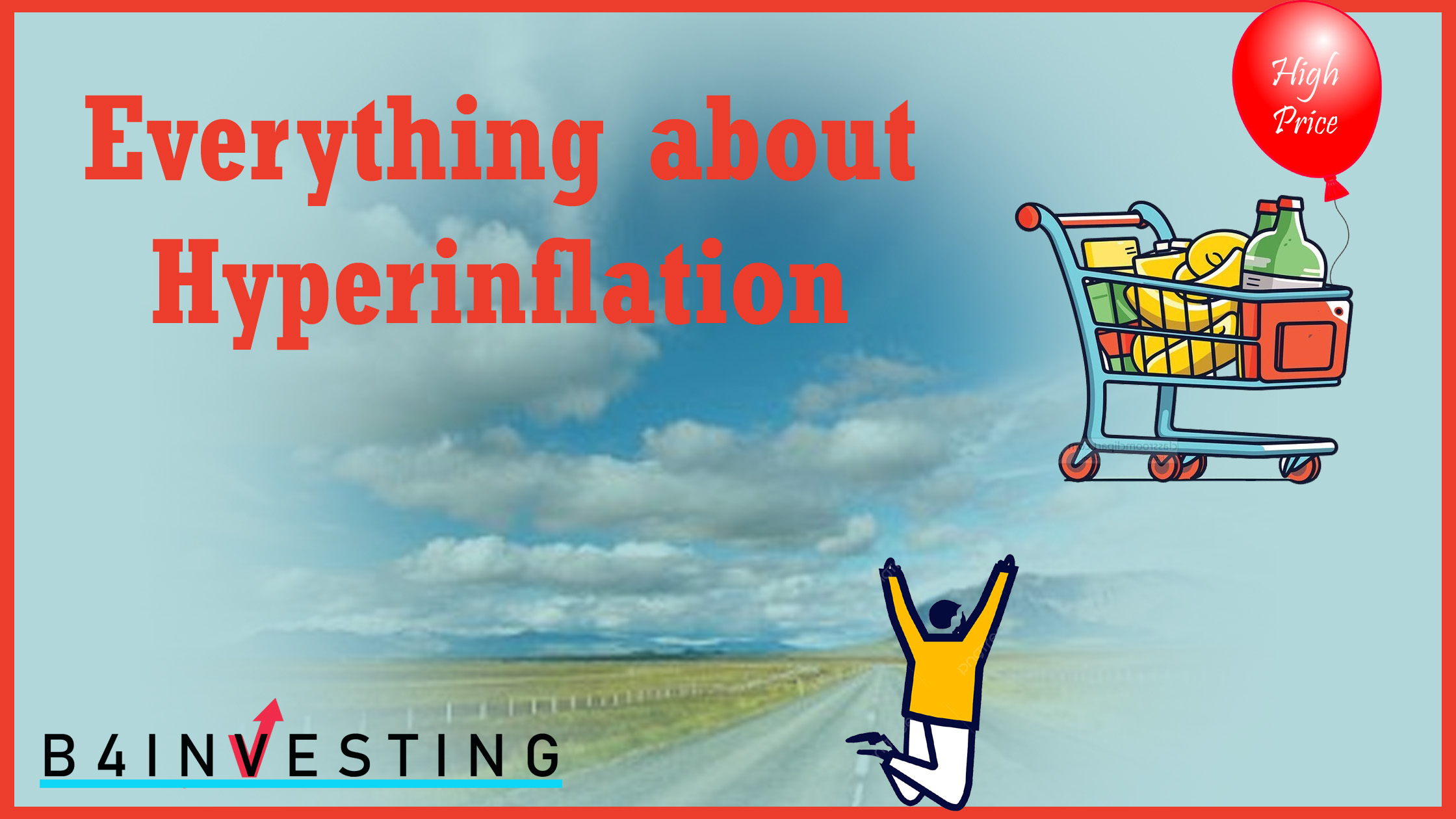
Hyperinflation is an extremely rapid and out-of-control increase in prices within an economy. Hyperinflation specifies uncontrollable price increase over a defined period, typically more than 50% per month. This leads to a sharp decline in the purchasing power of money, meaning that the cost of goods and services can rise drastically in a short period of time. Hyperinflation is rare event in developed economies.
Causes of Hyperinflation:
Excessive Money Supply: Central bank controls the circulation of money. To encourage the banks to lend money to consumers and businesses so they can spend money, Central bank may increase the circulation of money. But, if this increase in money supply is not supported by GDP(Gross Domestic Product) then it can result in hyperinflation.
Consumers pay higher prices when they have more money in hand. Companies charge more money and consumers pay more and Central bank prints more money so this cycle of increasing inflation continues and causes hyperinflation.
Loss of Confidence in the Currency: People may lose confidence in a country’s currency if they believe it no longer holds value. This loss of confidence can lead to a rapid increase in the demand for foreign currencies or tangible assets, further devaluing the local currency.
Fiscal Deficits and Debt Monetization: When Government spends more than it collects, Government faces large budget deficits. Government might finance these by printing more money. When a government is unable to meet its obligations through borrowing or revenue, it may resort to money creation, exacerbating inflationary pressures.
External Shocks: War, political instability, or a sudden collapse in key export sectors can lead to hyperinflation. For instance, during a war, governments often print money to finance military expenditures, leading to a sharp increase in the money supply.
Currency Devaluation: A significant devaluation of the national currency can make imports more expensive, driving up domestic prices. In economies reliant on imports for basic goods, this can quickly spiral into hyperinflation.
Supply Chain Disruptions: War, natural disasters, or political crises might cause shortage of resources. So, it can increase prices and eventually hyperinflation if monetary policy doesn’t adequately respond.
Demand-Pull Inflation: In some cases, increased consumer demand for goods and services can drive prices up. If the increase in demand outstrips the supply of goods, this can contribute to inflation, though hyperinflation generally requires additional contributing factors like money supply growth.
Effects of Hyperinflation
The effects of hyperinflation are widespread and destructive, impacting individuals, businesses, and the broader economy.
1. Devaluation of Currency:
Hyperinflation drastically reduces the purchasing power of money. People can no longer afford basic goods and services as prices increase daily. This leads to:
- Savings Erosion: The value of savings plummets, as money saved yesterday buys significantly less today.
- Loss of Income Stability: Workers may find their wages are not keeping pace with rising prices, even if it is increased.
2. Impact on Businesses:
Businesses suffer from the unpredictability and instability caused by hyperinflation. They may experience:
- Rising Costs: Input prices rise so rapidly that businesses struggle to set prices for their products, leading to shrinking profit margins.
- Bartering: As currency loses value, people and businesses often resort to bartering goods and services.
3. Economic Distortions:
- Price Distortions: Hyperinflation distorts prices to the point where it becomes hard to determine the true value of goods and services.
- Capital Flight: Investors pull their money out of the country to safeguard their assets, causing further economic instability.
4. Social and Political Instability:
Hyperinflation can lead to widespread social unrest:
- Poverty and Inequality: The poor are disproportionately affected, as they rely on fixed incomes, while wealthier individuals may have assets that retain value.
- Political Fallout: Governments are often overthrown during periods of hyperinflation due to public dissatisfaction with their handling of the economy.
5. Banking and Financial Sector Collapse:
- Loan Defaults: Hyperinflation often leads to massive loan defaults as people can no longer repay debts, causing banks to collapse.
- Loss of Confidence in the Financial System: The formal financial system can become obsolete as people turn to foreign currencies or barter systems to conduct transactions.
6. Impact on International Trade:
- Currency Depreciation: Hyperinflation usually leads to the rapid devaluation of the national currency, making imports prohibitively expensive.
- Loss of Competitiveness: Exporters may benefit temporarily from a cheaper currency, but the overall economic instability can harm long-term trade relationships.
Examples of Hyperinflation:
- Weimar Republic (Germany, 1920s): Prices doubled every few days, leading to severe social unrest.
- Zimbabwe (2000s): Zimbabwe experienced hyperinflation peaking at over 79.6 billion percent per month in 2008.
- Venezuela (2010s): Inflation rates exceeded 1 million percent in 2018, leading to widespread shortages of food and medicine.
Solutions to Hyperinflation:
- Currency Reform: Governments may introduce a new currency or peg the national currency to a more stable foreign currency.
- Fiscal Discipline: Reducing government deficits and controlling the money supply is crucial.
- International Aid: In extreme cases, international loans and aid may be necessary to stabilize the economy.
Takeaway:
We read what is Hyperinflation and its causes, effect. Hyperinflation erodes the fabric of society, causes severe economic dislocations, and often requires drastic reforms to restore stability.


Hello my loved one I want to say that this post is amazing great written and include almost all significant infos I would like to look extra posts like this